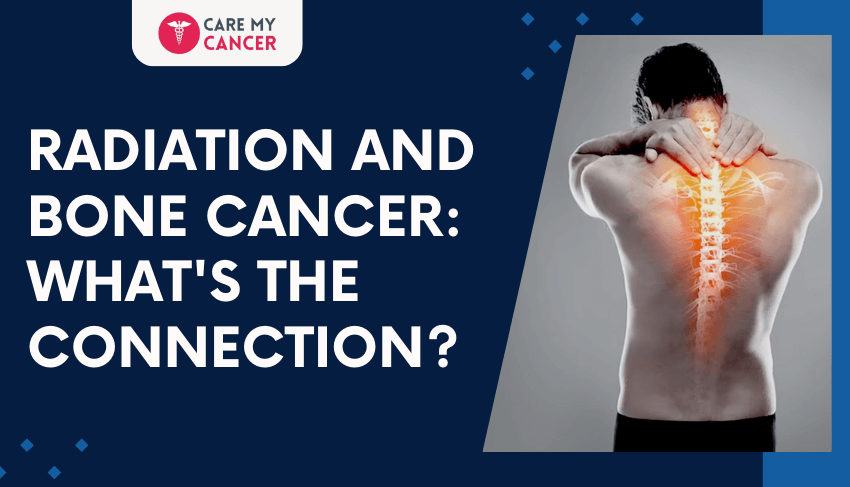Bone cancer is a rare yet serious condition that affects thousands of people worldwide. While its causes can be multifactorial, radiation exposure has been identified as one of the potential risk factors. But what exactly is the connection between radiation and bone cancer? Can radiation therapy, commonly used for cancer treatment, increase the risk of developing bone cancer? In this article, we will explore the relationship between radiation and bone cancer, its causes, risk factors, symptoms, and preventive measures.
Understanding Bone Cancer
Bone cancer occurs when abnormal cells grow uncontrollably in the bones, leading to tumors that can weaken bone structure and cause pain. There are several types of bone cancer, including:
- Osteosarcoma: The most common type, primarily affecting children and young adults.
- Chondrosarcoma: Develops in cartilage cells and is more common in older adults.
- Ewing’s Sarcoma: Affects bones and soft tissues, commonly seen in children and teenagers.
- Chordoma: A rare type that usually occurs in the spine and skull.
While the exact cause of bone cancer remains unclear, various genetic and environmental factors contribute to its development, one of which is exposure to radiation.
How Radiation Exposure Can Lead to Bone Cancer
1. High-Dose Radiation Exposure
Exposure to high levels of ionizing radiation, such as that from nuclear explosions, radiation accidents, or occupational exposure in industries like uranium mining, has been linked to an increased risk of bone cancer. Radiation can damage DNA in bone cells, leading to mutations that may result in uncontrolled cell growth and tumor formation.
2. Radiation Therapy as a Risk Factor
Radiation therapy is a common treatment for various cancers, including leukemia, breast cancer, and lymphoma. However, in some cases, high-dose radiation therapy can increase the risk of developing secondary cancers, including bone cancer.
- Radiation-Induced Sarcoma: A rare but serious condition that occurs years after radiation therapy, typically in bones or soft tissues exposed to high radiation doses.
- Latency Period: The risk of developing bone cancer after radiation exposure is often delayed, appearing years or even decades after treatment.
3. Radium Exposure and Bone Cancer
In the early 20th century, workers in watch-dial painting factories were exposed to radium, a radioactive element. Many of these workers later developed bone cancer due to the ingestion of radium, which accumulated in their bones. This historical case highlights the carcinogenic potential of prolonged exposure to radioactive substances.
Risk Factors for Radiation-Induced Bone Cancer
While radiation exposure is a known risk factor, other factors can increase the likelihood of developing bone cancer:
- Age: Younger individuals, particularly those undergoing radiation therapy, have a higher risk of developing radiation-induced bone cancer.
- Genetics: Certain inherited conditions, such as Li-Fraumeni syndrome, can increase susceptibility.
- Radiation Dose: Higher doses of radiation are more likely to cause genetic mutations leading to cancer.
- Treatment Area: Radiation exposure to large bone areas increases the risk compared to smaller, targeted treatments.
Symptoms of Radiation-Induced Bone Cancer
Recognizing the early signs of bone cancer is crucial for prompt diagnosis and treatment. Common symptoms include:
- Persistent bone pain, often worsening at night
- Swelling and tenderness around the affected area
- Unexplained fractures due to weakened bones
- Fatigue and unintentional weight loss
- Reduced mobility or difficulty in movement
If any of these symptoms persist, consulting a healthcare professional for further evaluation is essential.
Diagnosis and Treatment
Diagnosis
A combination of imaging tests and biopsy is used to diagnose bone cancer:
- X-rays: To detect abnormal bone growths.
- MRI and CT Scans: Provide detailed images of the tumor.
- Bone Scans: Identify areas of high bone activity.
- Biopsy: A sample of bone tissue is examined under a microscope to confirm the presence of cancer cells.
Treatment Options
Treatment for bone cancer depends on factors such as cancer type, location, and stage. The main treatment options include:
- Surgery: The primary method for removing cancerous tumors while preserving as much healthy bone as possible.
- Radiation Therapy: Used for tumors that cannot be surgically removed. However, careful planning is essential to minimize the risk of secondary cancers.
- Chemotherapy: Effective for certain types of bone cancer, such as Ewing’s sarcoma.
- Targeted Therapy: Focuses on specific cancer cell proteins to slow down tumor growth.
Preventive Measures
While it is not always possible to prevent bone cancer, taking certain precautions can reduce the risk associated with radiation exposure:
- Minimize Unnecessary Radiation Exposure: Limit medical imaging tests like X-rays and CT scans unless absolutely necessary.
- Follow Radiation Safety Protocols: Individuals working in radiation-prone environments should follow safety guidelines, such as wearing protective gear.
- Monitor Radiation Therapy Risks: If undergoing radiation treatment, discuss potential long-term risks with your doctor and explore alternative treatments when feasible.
- Regular Health Checkups: Those with a history of radiation therapy should have routine screenings to detect any early signs of bone cancer.
Conclusion
The connection between radiation and bone cancer is well-established, particularly in cases of high-dose radiation exposure. While radiation therapy is a crucial treatment for many cancers, it carries a risk of secondary malignancies, including bone cancer. Understanding these risks and taking preventive measures can help in early detection and better management of bone cancer. If you or a loved one has been exposed to radiation and experience persistent bone pain or other symptoms, seeking medical advice is vital for timely diagnosis and treatment.
By staying informed and cautious about radiation exposure, we can work towards reducing the risk of radiation-induced bone cancer and improving overall health outcomes.

